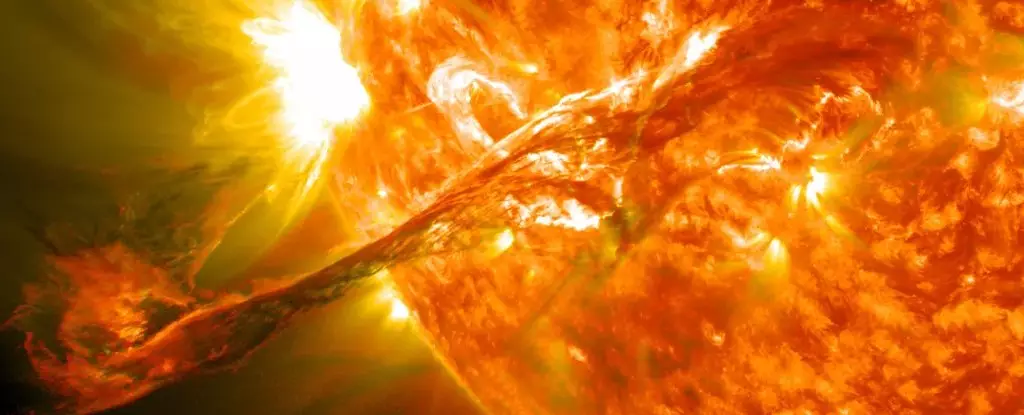The Sun may appear calm and peaceful from a distance, but upon closer observation, it is revealed to be a hub of erupting solar activity that has defied astrophysicists’ expectations. Andrew Gerrard, the department chair and director of the Center for Solar-Terrestrial Research at New Jersey Institute of Technology, expressed surprise at the heightened solar activity, which goes against the anticipated trends of the current solar cycle.
In typical solar cycles that occur every 11 years, the Sun transitions from minimum to maximum solar activity. This activity reaches its peak in the middle of the cycle when the Sun’s magnetic fields reverse. The recent solar cycles, culminating from 2008 to 2019, have shown increased activity, leading to the emergence of dark sunspots on the solar surface. These sunspots, indicative of heightened solar activity levels, have been reaching record highs over the past year, according to Gerrard.
The presence of sunspots becomes crucial as they are the source of powerful solar flares and eruptions known as coronal mass ejections. These events can potentially disrupt Earth’s systems, causing radio blackouts, power grid failures, GPS malfunctions, and even satellite disturbances. While not all sunspots result in eruptions, these solar storms pose serious threats that researchers like Alex James deem important to predict and prepare for. The potential for geomagnetic storms, triggered by high-energy particles interacting with Earth’s magnetic field, is a cause of concern.
Geomagnetic storms have already caused disturbances on several continents, leading to disruptions in radio communications, power outages, grounded flights, and satellite interference. In some instances, space debris, like Starlink satellites, has fallen from orbit due to sensitive orbital positioning and the effects of geomagnetic storms. The growing reliance on satellite technology, as highlighted by James, places us at greater vulnerability to the impacts of solar maximum.
With solar activity projected to rise until it reaches its peak, known as solar maximum, in the second half of 2025, uncertainties remain regarding the full extent of the upcoming solar cycle. While the current cycle is expected to be stronger than previously estimated, it is still considered fairly average in a historical context. As we strive to navigate the implications of increased solar activity in the modern age, continuous research and preparedness are emphasized by experts like Mathew Owens in handling the unpredictable behavior of our closest star.


Leave a Reply